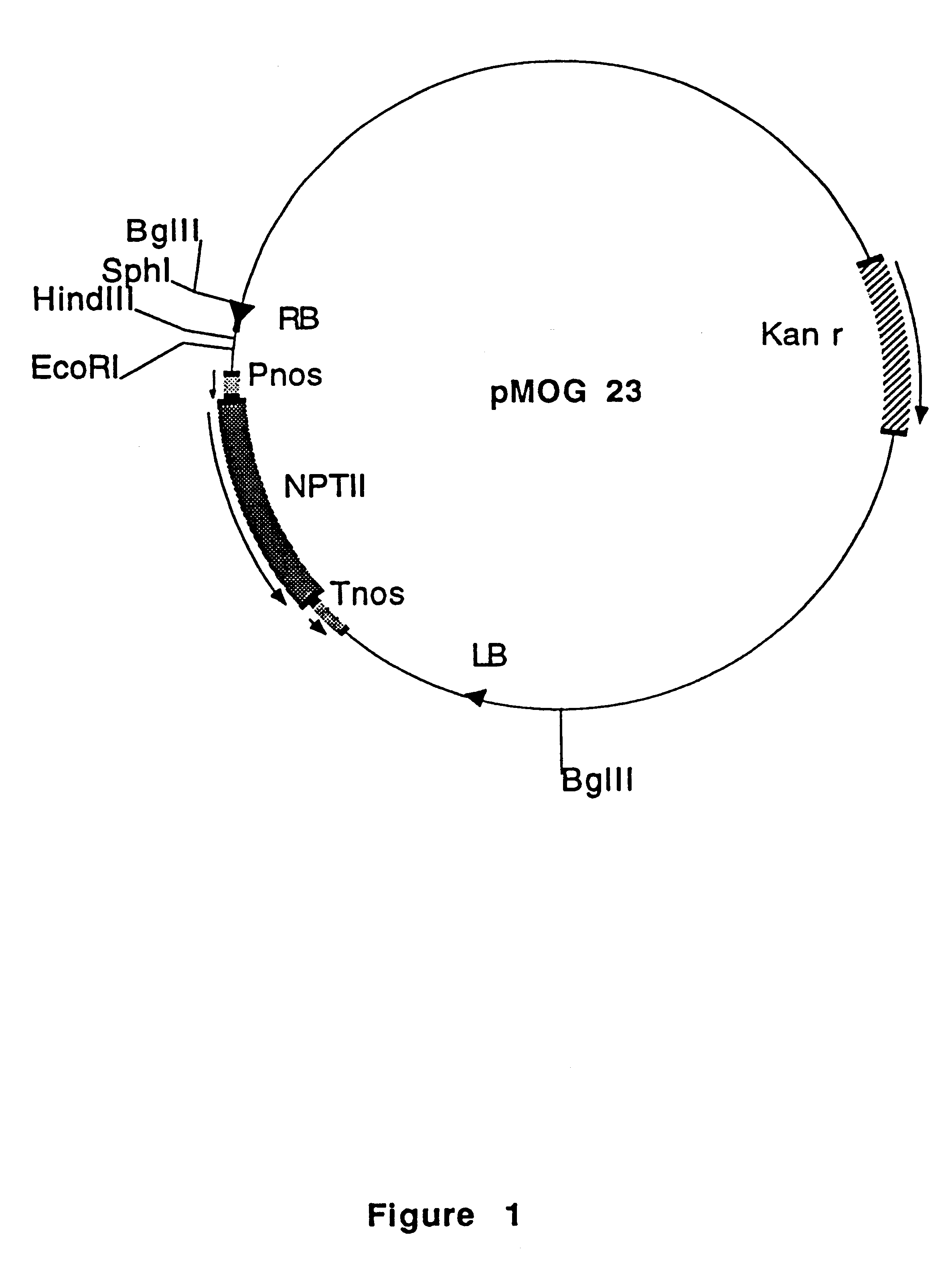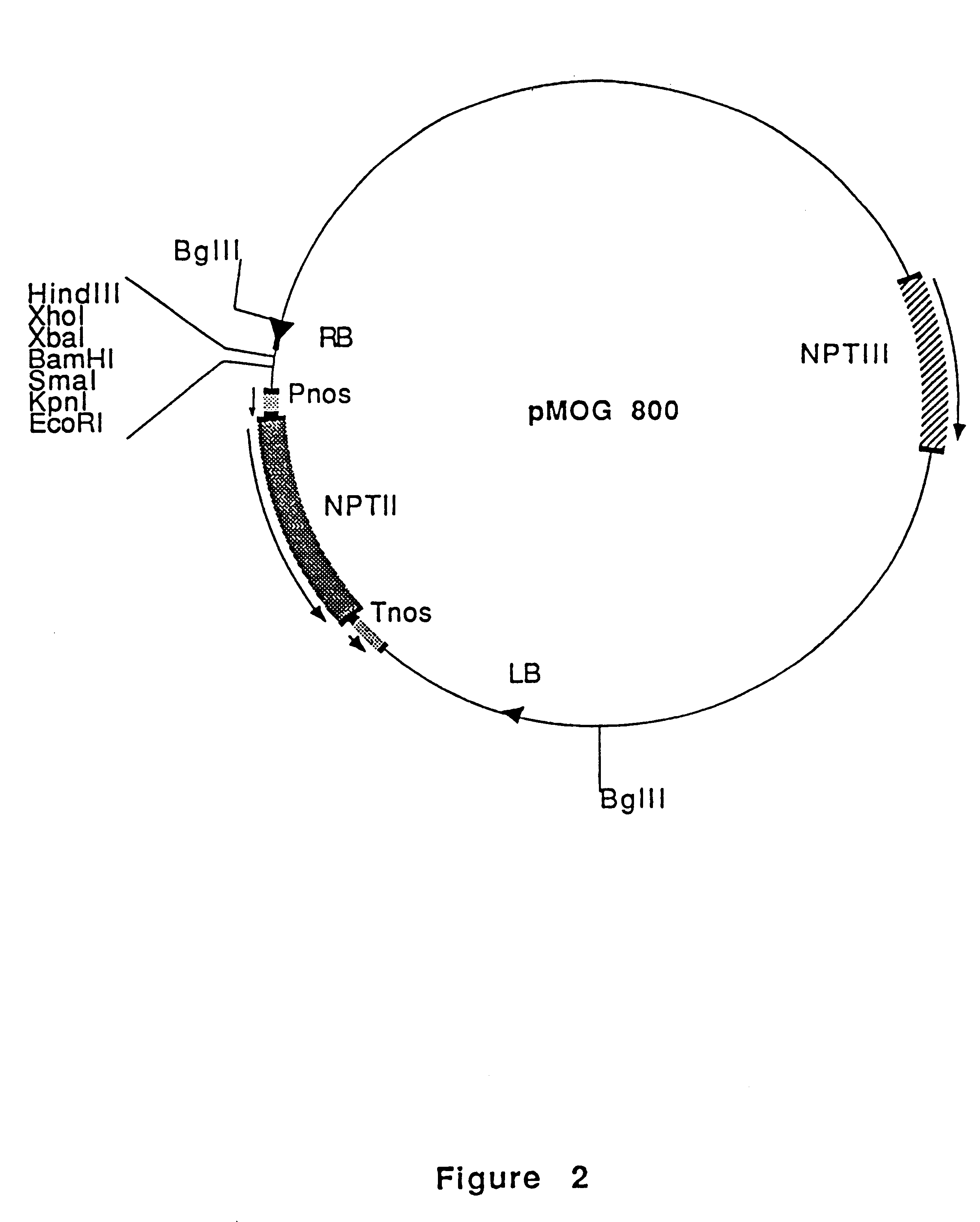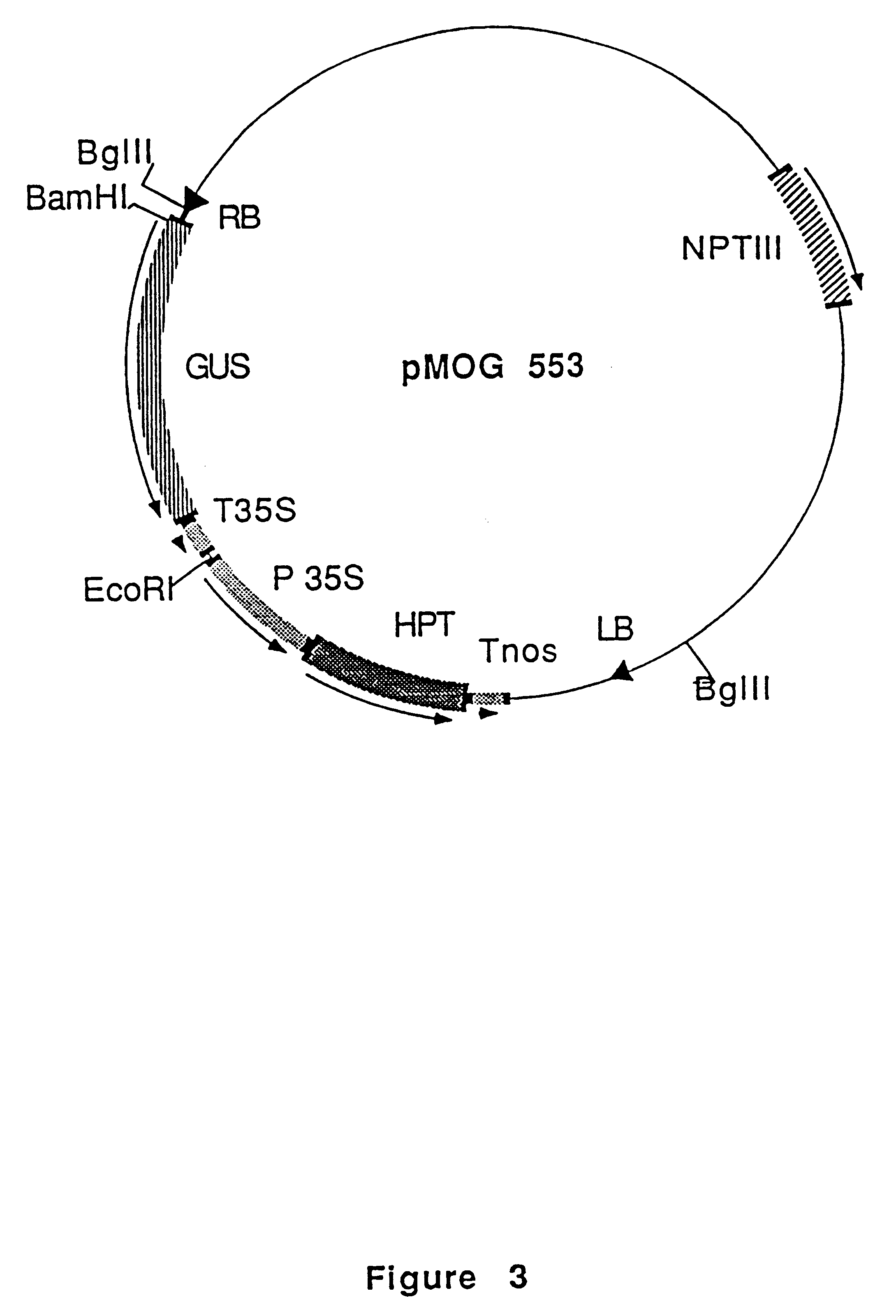Nematode-inducible plant gene promoter
a plant gene and promoter technology, applied in tissue culture, library member identification, enzymes, etc., can solve the problems of unsuitable tobrb7 sequence for use in chimeric constructs, not activated by a number of cyst nematodes,
- Summary
- Abstract
- Description
- Claims
- Application Information
AI Technical Summary
Benefits of technology
Problems solved by technology
Method used
Image
Examples
example 1
Construction of Binary Vector pMOG800
The binary vector pMOG800 is a derivative of pMOG23 (FIG. 1, deposited at the Centraal Bureau voor schimmelcultures, Oosterstraat 1, Baarn, The Netherlands on Jan. 29, 1990 under number CBS 102.90) in which an additional KpnI restriction site was introduced into the polylinker between EcoRI and SmaI. This plasmid contains between the left and right borders of T-DNA a kanamycin resistance gene for selection of transgenic plant cells (FIG. 2). A sample of E. Coli DH5 alpha, harbouring pMOG800, was deposited at the Centraal Bureau voor Schimmelcultures, Oosterstraat 1, Baarn, The Netherlands, on Aug. 12, 1993 under number CBS 414.93.
example 2
Construction of Promoterless GUS Construct pMOG553
Construction of this vector is described in Goddijn et al. 1993 Plant J 4, 863-873. In this reference an error occurs; the construct contains a CaMV 35S RNA terminator behind the .beta.-glucuronidase gene instead of the indicated nos terminator. The sequence between the T-DNA borders of this binary vector is available from the EMBL database under accession number: X84105.pMOG553 carries the HygR marker for plant transformation (FIG. 3).
example 3
Identification and Isolation of a Trapped NFS-preferential Promoter Fragment in Arabidopsis thaliana
The binary vector pMOG553 was mobilized by triparental mating to Agrobacterium tumefaciens strain MOG101. The resulting strain was used for Arabidopsis root transformation. More than 1100 transgenic Arabidopsis plant lines were obtained in this way. Transgenic plants were grown to maturity, allowed to self-fertilize and the resulting seeds (51) were harvested and vernalized. Subsequently S1 seeds were germinated on nutrient solution (Goddijn et al. 1993 Plant J 4, 863-873) solidified with 0.6% agar, 10 mg / l hygromycin and stored at 4.degree. C. for a 4 day imbibition period. At day 5 the plates were transferred to room temperature and moderate light (1000 lux, 16 h L / 8 h D) for germination. Fourteen days old seedlings were transferred to potting soil in tilted translucent plastic tubes (30.times.15.times.120 mm) for further growth at 5000 lux (20.degree. C.). Growing the plants in thi...
PUM
| Property | Measurement | Unit |
|---|---|---|
| thick | aaaaa | aaaaa |
| diameter | aaaaa | aaaaa |
| density | aaaaa | aaaaa |
Abstract
Description
Claims
Application Information
 Login to View More
Login to View More - R&D
- Intellectual Property
- Life Sciences
- Materials
- Tech Scout
- Unparalleled Data Quality
- Higher Quality Content
- 60% Fewer Hallucinations
Browse by: Latest US Patents, China's latest patents, Technical Efficacy Thesaurus, Application Domain, Technology Topic, Popular Technical Reports.
© 2025 PatSnap. All rights reserved.Legal|Privacy policy|Modern Slavery Act Transparency Statement|Sitemap|About US| Contact US: help@patsnap.com



